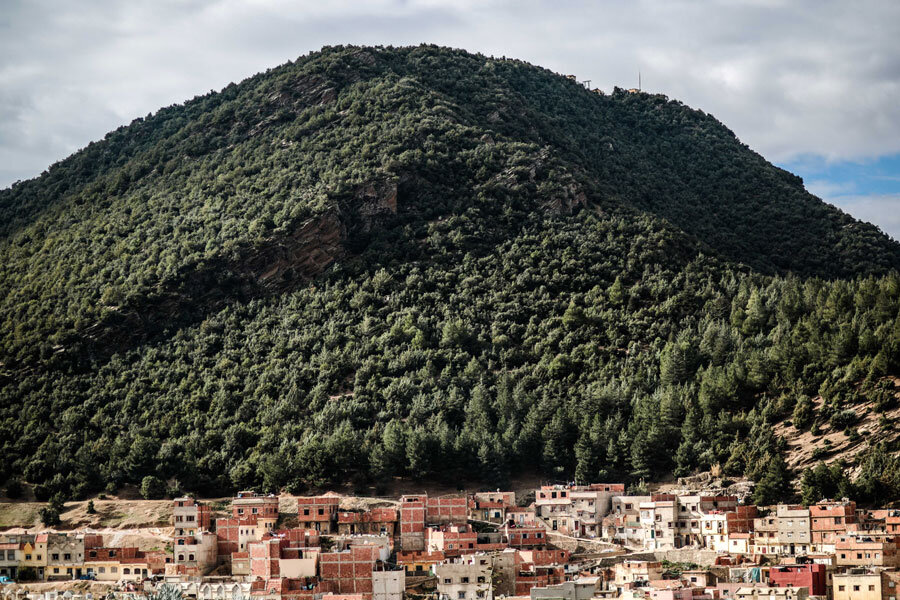Climate change surprise: Biosphere contributes to warming
Loading...
The world's biosphere is now adding to global warming, turning traditional assumptions about greenhouse gases on their heads, according to a new study published Thursday in the scientific journal Nature.
Most students learn that plants absorb carbon dioxide, a major greenhouse gas, as part of photosynthesis. But a team of researchers looking closer at this assumption have found that human-induced changes to plants and animal populations have transformed the biosphere's status from a net greenhouse gas sink to a net greenhouse gas source.
“Typically we think of land as a net ‘sink’ of carbon dioxide,” said Dr. Anna Michalak, a professor at Stanford University and co-author of the study, in a press release. “But we found that the sign of the human-induced impact is reversed [turned from a positive into a negative] if we also take into account methane and nitrous oxide.”
Carbon dioxide (CO2 ) gets the most attention as the primary contributor to climate change, but methane (CH4 ) and nitrous oxide (N2 O) round out the list of top three greenhouse gas emissions. And while the latter two are smaller in volume, they're much more effective at trapping heat than carbon dioxide.
So yes, the biosphere does continue to absorb carbon dioxide through photosynthesis, but it is also producing much more methane and nitrous oxide than in pre-industrial times.
“None of the previous studies but these three gases together,” says lead author Hanqin Tian of Auburn University to The Christian Science Monitor in a phone interview.
“When we consider these three gases together, then we find methane and nitrous oxide together are two times larger than the sink carbon dioxide offers. In terms of global warming potential, methane and nitrogen oxide are way worse than carbon monoxide.”
Humans have planted trees and crops, adding to the biosphere's carbon sink, but we have also created factory farms for cattle (methane producers) and used tons upon tons of chemical fertilizers (nitrous oxide producers).
In all, the team concluded, human-driven methane and nitrous oxide production far outweighed the impact of human-driven carbon dioxide uptake.
“In other words, the terrestrial biosphere, through human action, is now contributing to climate change rather than mitigating climate change," says Stanford University’s Carnegie Institution in a press release.
Tian and his 22 co-authors point to several other agricultural practices and waste disposal methods that are responsible for the change. Rice cultivation, livestock waste, and landfill emissions are major methane sources, and agriculture fertilizers are a main source of nitrous oxide.
And human-induced greenhouse gas emissions vary by region. In North America, Northern Asia, South America and Europe, where carbon dioxide emissions often are the highest, the biosphere’s carbon dioxide sinks pretty much balance out the methane and nitrous oxide emissions.
But in Southern Asia and Africa, the biosphere’s emissions far surpass its sequestration capacity.
“Southern Asia has about 90 percent of the global rice fields and represents more than 60 percent of the world’s nitrogen fertilizer consumption," the study's authors write, and the region is responsible for more than two-thirds of all methane emissions and about half of all nitrous oxide emissions derived from agriculture or waste.
The authors also point to a better path forward. "Given the large footprint of agriculture in Southern Asia," they write, "improved fertilizer use efficiency, rice management, and animal diets could substantially reduce global agricultural N2 O and CH4 emissions."
And if massive wildfires and deforestation continue, even longstanding carbon dioxide sinks may be a thing of the past.
"This study should serve as a wake-up call to governments, policymakers, and individuals around the world," said Dr. Michalak.
"We must expand our focus," she says, "and devise strategies that target the biogenic emissions of these other greenhouse gases if we are to change the course of climate change."








